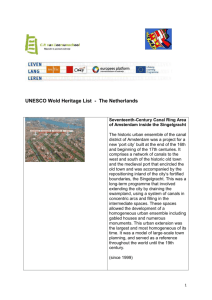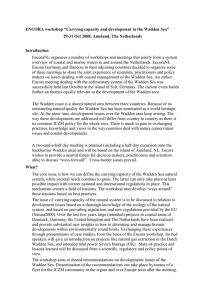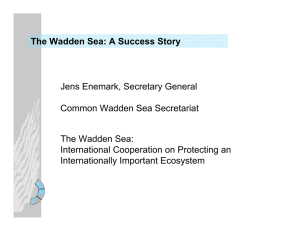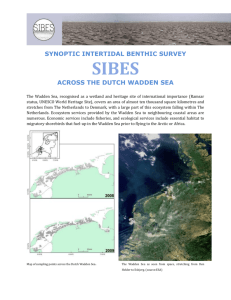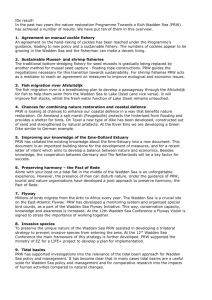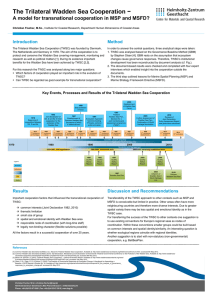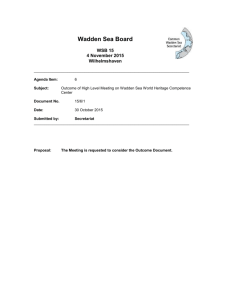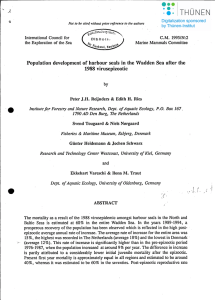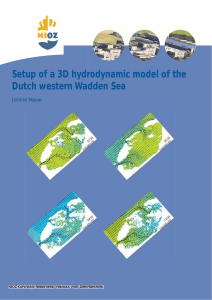IOW press release of 2 April 2012
advertisement
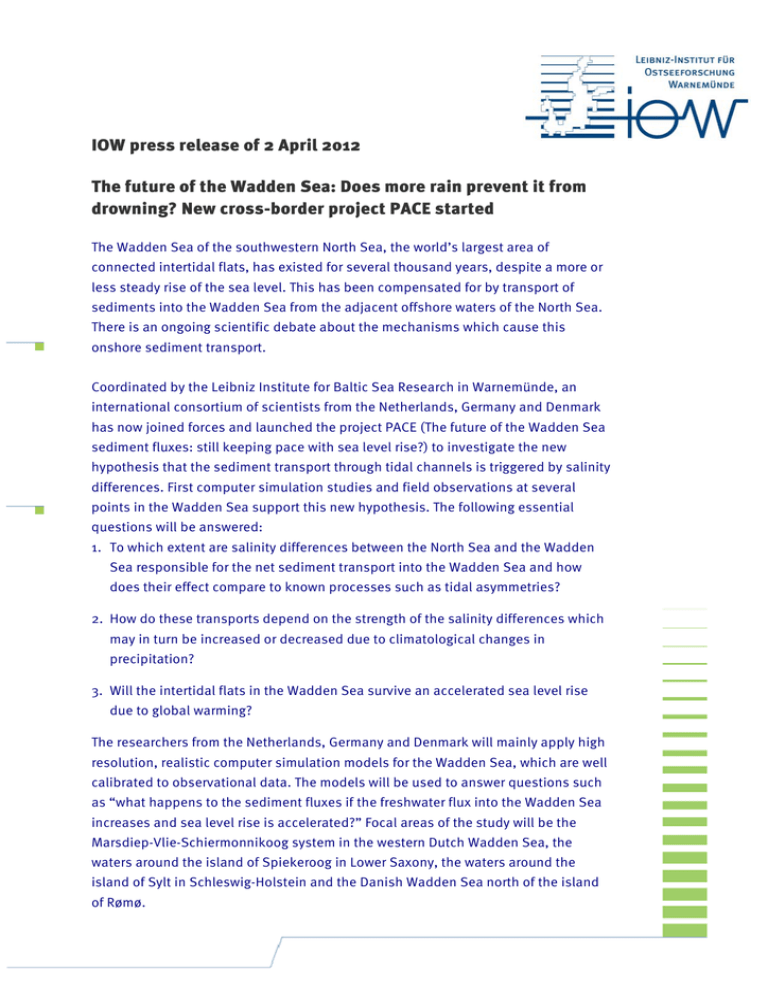
IOW press release of 2 April 2012 The future of the Wadden Sea: Does more rain prevent it from drowning? New cross-border project PACE started The Wadden Sea of the southwestern North Sea, the world’s largest area of connected intertidal flats, has existed for several thousand years, despite a more or less steady rise of the sea level. This has been compensated for by transport of sediments into the Wadden Sea from the adjacent offshore waters of the North Sea. There is an ongoing scientific debate about the mechanisms which cause this onshore sediment transport. Coordinated by the Leibniz Institute for Baltic Sea Research in Warnemünde, an international consortium of scientists from the Netherlands, Germany and Denmark has now joined forces and launched the project PACE (The future of the Wadden Sea sediment fluxes: still keeping pace with sea level rise?) to investigate the new hypothesis that the sediment transport through tidal channels is triggered by salinity differences. First computer simulation studies and field observations at several points in the Wadden Sea support this new hypothesis. The following essential questions will be answered: 1. To which extent are salinity differences between the North Sea and the Wadden Sea responsible for the net sediment transport into the Wadden Sea and how does their effect compare to known processes such as tidal asymmetries? 2. How do these transports depend on the strength of the salinity differences which may in turn be increased or decreased due to climatological changes in precipitation? 3. Will the intertidal flats in the Wadden Sea survive an accelerated sea level rise due to global warming? The researchers from the Netherlands, Germany and Denmark will mainly apply high resolution, realistic computer simulation models for the Wadden Sea, which are well calibrated to observational data. The models will be used to answer questions such as “what happens to the sediment fluxes if the freshwater flux into the Wadden Sea increases and sea level rise is accelerated?” Focal areas of the study will be the Marsdiep-Vlie-Schiermonnikoog system in the western Dutch Wadden Sea, the waters around the island of Spiekeroog in Lower Saxony, the waters around the island of Sylt in Schleswig-Holstein and the Danish Wadden Sea north of the island of Rømø. The project is jointly funded by the Netherlands Organisation of Scientific Research (NWO) and the German Ministry of Research and Education (BMBF) in the framework of the Georisk part of the 1st transnational call for proposals on Bilateral Wadden Sea Research. The participating institutes and the contact persons are: 1. Leibniz Institute for Baltic Sea Research Warnemünde (Germany): Prof. Dr. Hans Burchard (email: hans.burchard@io-warnemuende.de, Tel.: +49-3815197-140) 2. Royal Netherlands Institute for Sea Research (The Netherlands): Dr. Theo Gerkema (email: gerk@nioz.nl, Tel.: +31-222-369426) 3. Helmholtz-Zentrum Geesthacht - Centre for Materials and Coastal Research (Germany): Dr. Götz Flöser (email: goetz.floeser@hzg.de, Tel.: +49-4152-872345) 4. Deltares (The Netherlands): Dr. Gerben de Boer (email: gerben.deboer@deltares.nl, Tel.: +31-88-3358534) 5. DHI Water & Environment (Denmark): Dr. Ole Petersen (email: osp@dhigroup.dk, Tel.: +45-45169200) 6. University of Copenhagen, Department of Geography & Geology (Denmark): Prof. Morten Pejrup (email: mp@geo.ku.dk, Tel.: +45-353-22505) 7. AWI / Wadden Sea Station Sylt (Germany): Dr. Ragnhild Asmus (email: ragnhild.asmus@awi.de, Tel.: +49-4651- 956-4308) The IOW is a member of the Leibniz Association, which currently includes 87 research institutes and a scientific infrastructure for research. The Leibniz Institutes' fields range from the natural sciences, engineering and environmental sciences, business, social sciences and space sciences to the humanities. Federal and state governments together support the Institute. In total, the Leibniz Institute has 16 800 employees, of which approximately are 7,800 scientists, and of those 3300 young scientists. The total budget of the Institute is more than 1.4 billion Euros. Third-party funds amount to approximately € 330 million per year.(www.leibniz-gemeinschaft.de)

